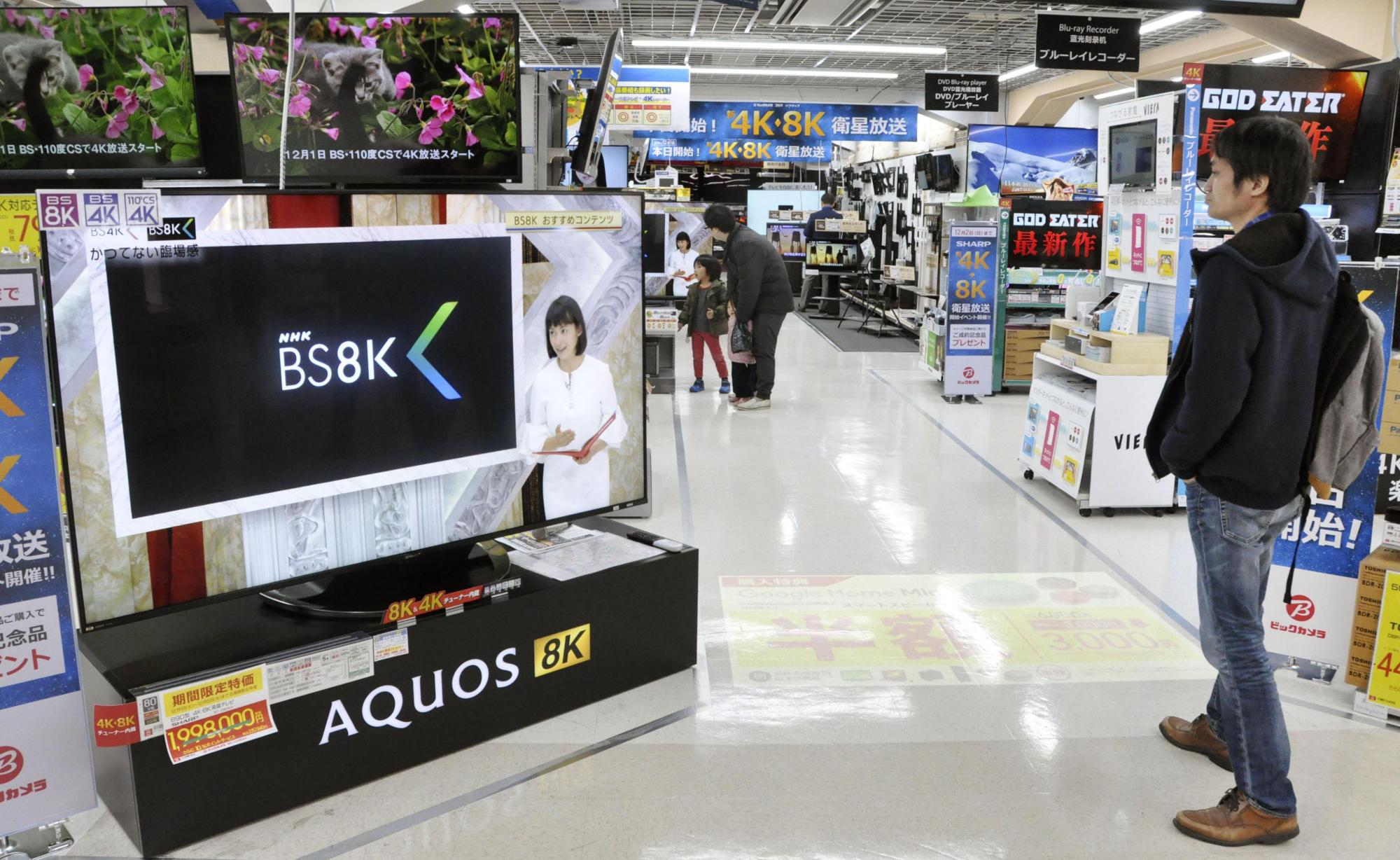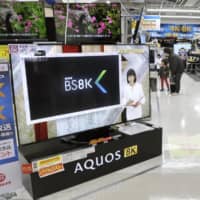Public broadcaster NHK and several other TV stations began airing 4K and 8K ultra-high-definition programs on satellite channels Saturday.
4K contents were offered on 17 channels, with NHK initially being the only broadcaster to run 8K programs.
The government has been pushing the 4K and 8K services in time for the 2020 Tokyo Olympics and Paralympics, even though a limited amount of content is available in the higher resolution and viewers at least need a 4K-capable TV to watch it.
Some 4K-ready TVs are not capable of receiving 4K signals by themselves and owners need to purchase a receiver. To watch 8K and some of the 4K broadcasts, viewers also need a dedicated satellite dish.
4K resolution with 4,000 horizontal pixels has four times as many pixels as a full high-definition image and 8K has 16 times as many, but only a handful of manufacturers currently sell 8K TVs and they are expensive.
Sharp Corp. began selling its 8K TVs with embedded receivers in November, with the smallest 60-inch screen model costing ¥750,000 before tax.
Some retailers stepped up marketing of 4K and 8K TVs, expecting demand to gradually increase as the Olympics draws closer.
A 58-year-old man visiting an electronics store in Tokyo said after watching an 8K TV on display, "I've seen it for the first time. The images are sharp and vivid, and different from my TV's".
"But it doesn't make sense to buy an expensive TV when there aren't programs I want to watch (in 8K resolution). I'm in no hurry to get my hands on it," he added.




